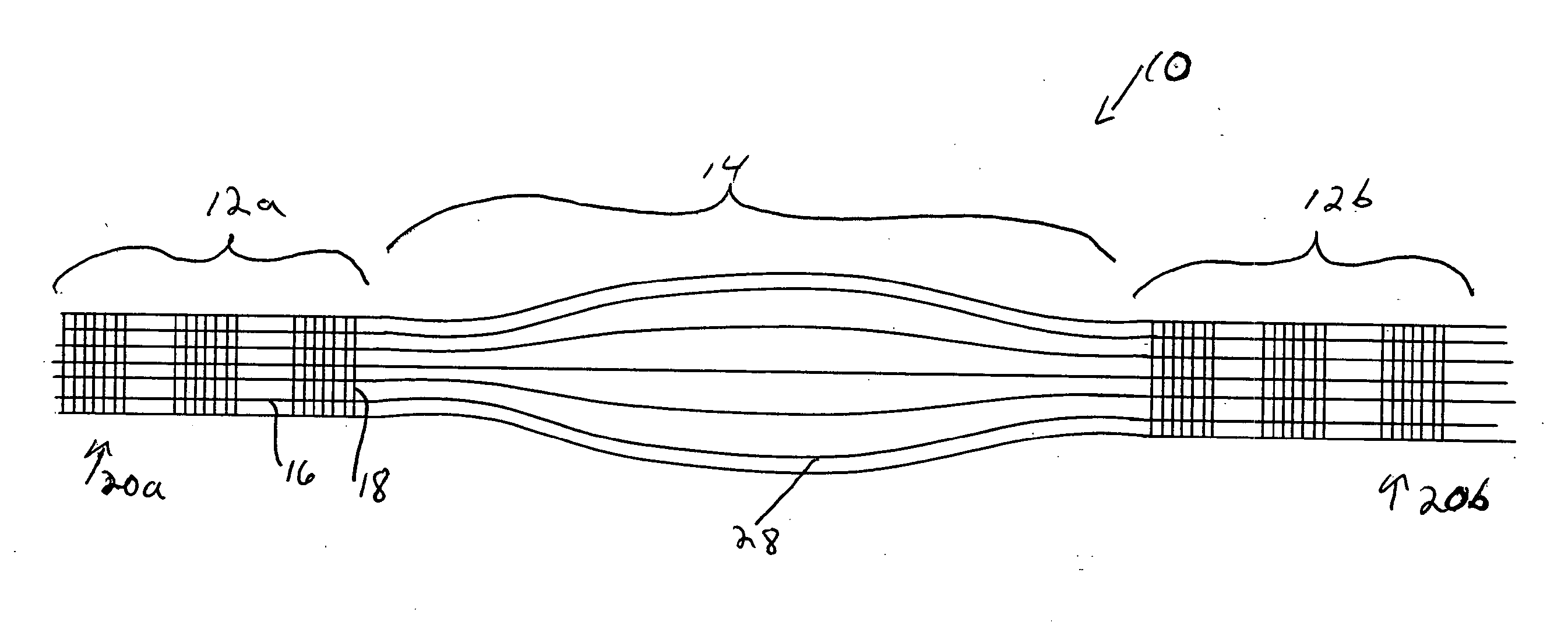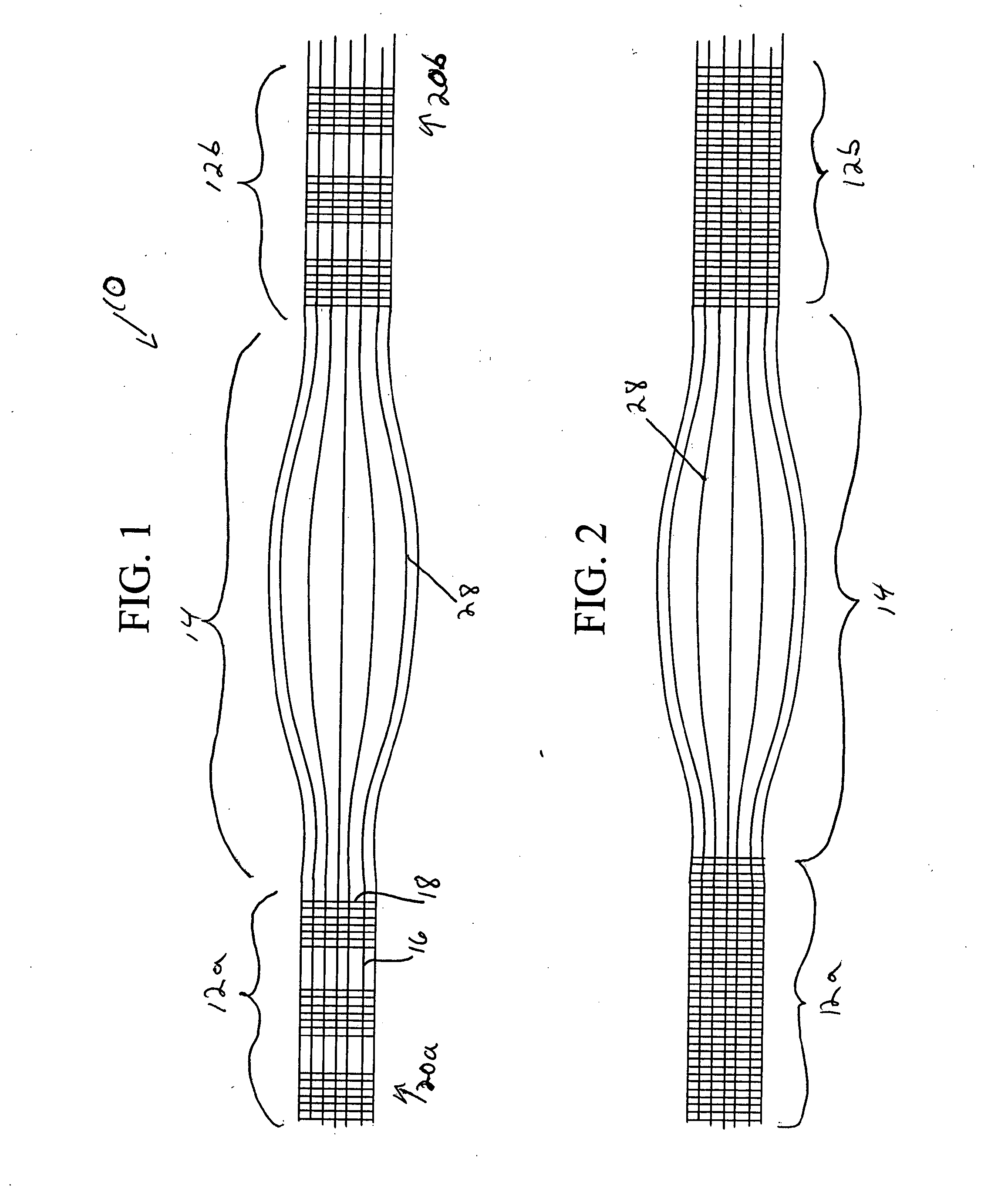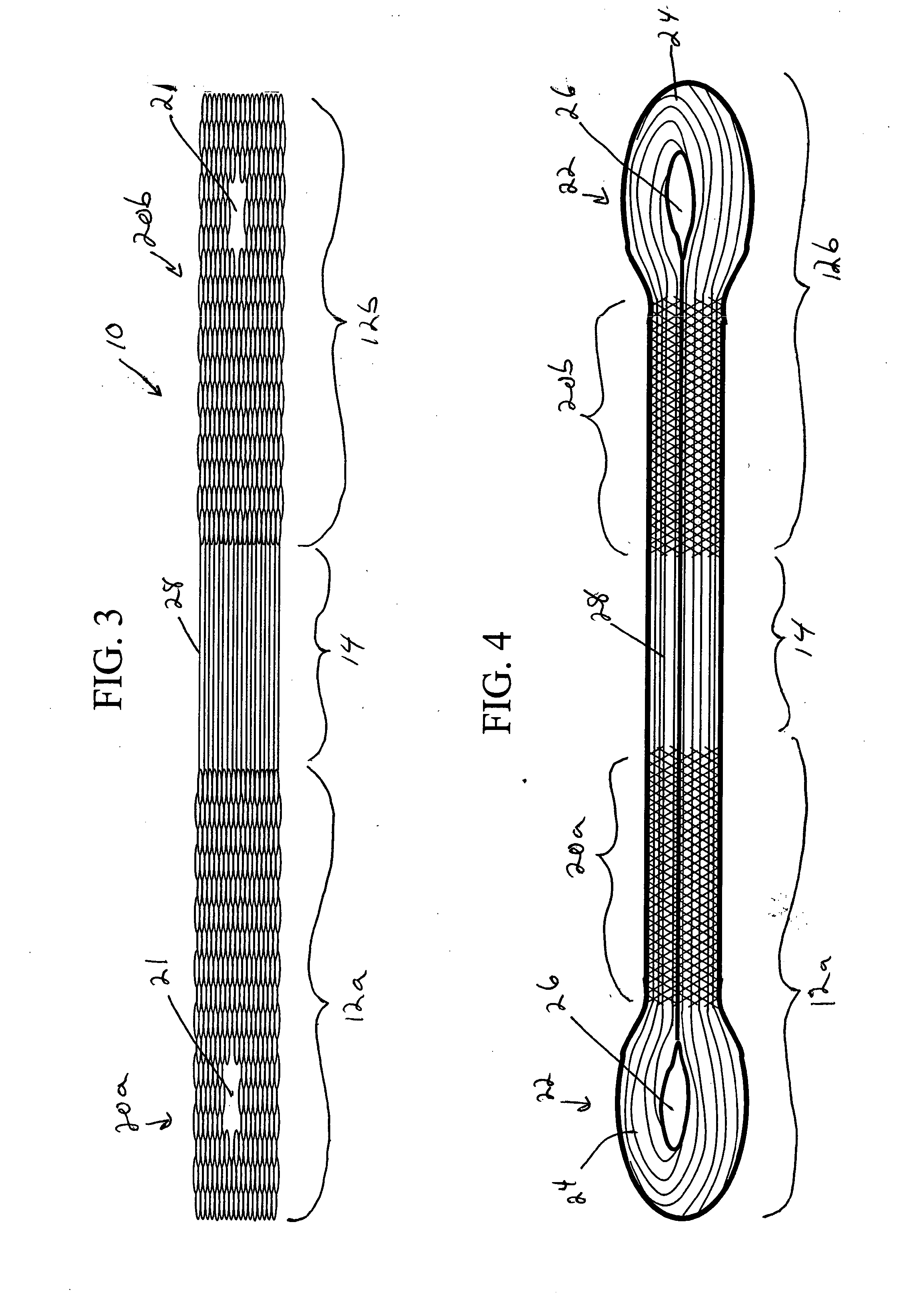Scaffold for connective tissue repair
a connective tissue and scaffolding technology, applied in the field of scaffolding for connective tissue repair, can solve the problems of excessive stress placed on these soft tissues, partial or permanent disability, and associated risks of harvesting procedure, and achieve the effect of facilitating tissue ingrowth
- Summary
- Abstract
- Description
- Claims
- Application Information
AI Technical Summary
Benefits of technology
Problems solved by technology
Method used
Image
Examples
example 1
[0104]Native anterior cruciate ligament (ACL) tissue was excised from a goat knee and the ACL was reconstructed using a ligament graft resembling that of the type shown in FIG. 4. The graft was formed of PANACRL, a 95:5 copolymer of lactide and glycolide, and was prepared for implantation by incorporating into the graft about 2 ml. of platelet rich plasma (PRP). In one evaluation about 600 mg. minced ACL fragments (about 1 mm. in size) was also incorporated into the graft. The purpose of this study was to evaluate the potential of synthetic scaffolds with autologous growth factors and / or minced tissue to regenerate the ACL. The grafts were 3.5 mm in diameter and the PRP and the minced tissue were placed on the graft before insertion into the tibial and femoral bone tunnels. A VICRYL mesh was sutured around the PANACRYL graft and minced tissue to help retain the tissue on the graft. Fixation of the device was achieved on both the femoral and tibial side using a screw / washer system. A...
example 2
[0105]A synthetic ACL graft of the type shown in FIG. 4 and formed of PANACRYL, a 95:5 copolymer of lactide and glycolide, was tested mechanically in tension with a gauge length of 8 inches and a strain rate of 1 inch / min. The stiffness was measured to be 160 N / mm and the graft was found to have an ultimate tensile strength of 2600N.
PUM
| Property | Measurement | Unit |
|---|---|---|
| length | aaaaa | aaaaa |
| length | aaaaa | aaaaa |
| diameter | aaaaa | aaaaa |
Abstract
Description
Claims
Application Information
 Login to View More
Login to View More - R&D
- Intellectual Property
- Life Sciences
- Materials
- Tech Scout
- Unparalleled Data Quality
- Higher Quality Content
- 60% Fewer Hallucinations
Browse by: Latest US Patents, China's latest patents, Technical Efficacy Thesaurus, Application Domain, Technology Topic, Popular Technical Reports.
© 2025 PatSnap. All rights reserved.Legal|Privacy policy|Modern Slavery Act Transparency Statement|Sitemap|About US| Contact US: help@patsnap.com



